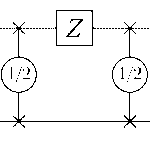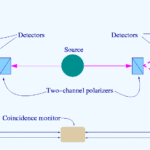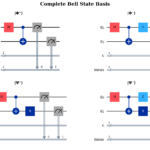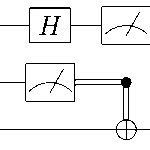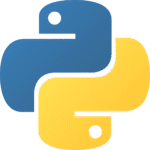Physics to AI Career: My Transition from Lab to Industry
My physics to AI career transition began with a simple fascination: how small, fundamental pieces work together to create something magnificent. Whether it’s watching the intricate gears of an analog clock mesh perfectly to track time, or understanding how transistors build up through logic gates to form the complex systems we call computers – this love for understanding how tiny components create vast, functioning systems has defined my entire physics to AI career journey. Looking back, every major decision in my career transition has been driven by this fundamental curiosity about how individual logic pieces fit together like clockwork.
Why Physics? The Love for Understanding Fundamental Logic
Since I was young, I couldn’t help but ask “why” about everything around me. But it wasn’t just curiosity – I was specifically drawn to understanding how individual causes and logic pieces fit together like clockwork to produce observable phenomena. This fascination led me to love studying everything from the mechanical precision of analog timepieces to the elegant way computer architecture builds from basic transistor operations into sophisticated processing systems.
In high school, this interest was just a personal hobby. But during my second year, I met a professor who introduced me to a science book reading program. Through this program, I dove deeper into physics literature and realized this wasn’t just casual interest – it was genuine passion for understanding the fundamental logic that governs our universe. The decision to major in physics felt natural.
The Physics to AI Career Decision: Recognizing a Paradigm Shift
To be completely honest, I didn’t fall in love with development the way I did with physics. My relationship with coding was more practical than passionate – if I needed something built, I’d figure out how to build it myself. What I genuinely enjoyed was studying the underlying logic: computer architecture, algorithms, and the systematic thinking required for programming.
During my sophomore year in university, I recognized that we were experiencing a fundamental paradigm shift in society. AI wasn’t just another technology trend – it was becoming essential infrastructure, much like how the internet transformed everything before it. This realization became a crucial turning point in my physics to AI career path. I knew that regardless of my future direction, understanding AI would be essential for any meaningful physics to AI career transition.
Research Life: The Joy and Frustration of Discovery
My time in the spectroscopy research lab taught me what it truly means to be a researcher. Unlike classroom learning where concepts are presented in organized, digestible formats, research required me to dive into academic papers, hunt down unfamiliar concepts, and piece together understanding from scattered sources.
What I loved most was the freedom to explore. I could follow my curiosity down rabbit holes, connect seemingly unrelated concepts, and gradually build comprehensive understanding of complex phenomena. The process reminded me of assembling an intricate mechanism – each paper and experiment added another gear to the machine.
But research also meant frequent failure. I’d develop hypotheses, design careful experiments, and expect meaningful results – only to face unexpected outcomes that sent me back to the drawing board. There were countless nights when I’d lie in bed with research problems spinning endlessly in my mind, trying to figure out where my logic had gone wrong.
The breakthrough moments made every frustration worthwhile. When meaningful data finally emerged after weeks of trial and error, when experiments aligned with theoretical predictions, when I could see the elegant mechanical precision of natural phenomena – those moments of clarity and achievement were unmatched.
Transitioning to Industry: A Different Kind of Machine
My transition to the AI industry came through a professor’s connection, starting as an intern at my current company. This marked the practical beginning of my physics to AI career transition. The shift from academic research to industry work revealed fundamental differences in how these two worlds operate.
In the research lab, I had the freedom to pursue interesting questions and explore tangential discoveries. Industry work operates more like a well-oiled machine with specific objectives and timelines. While this structure brought its own satisfactions, I missed the exploratory freedom of academic research.
The technical challenges, however, remained engaging. Working on YOLO model optimization gave me the opportunity to dissect existing AI systems and understand their fundamental mechanics. I discovered that our number plate recognition system had data distribution issues – the model could detect plates accurately, but struggled with character recognition within the extracted regions.
Solving this required the systematic approach I’d learned to love: analyze the problem’s root causes, gather additional training data from six different regions, relabel everything meticulously, and fine-tune parameters from epoch settings to threshold values. The 7% performance improvement we achieved felt like successfully calibrating a precision instrument.
The Fundamental Difference: Mastery vs. Discovery
Through this career transition from physics to AI, I’ve realized something important about what drives me. Development work, while intellectually satisfying, tends toward mastery – as you gain experience, tasks become more familiar and manageable. You’re essentially optimizing an existing machine.
Physics research, by contrast, is fundamentally about discovery. The more you study, the more new concepts emerge. Rather than becoming comfortable with known processes, you’re constantly encountering unfamiliar territory. Each research question is like encountering a completely new type of mechanism – you have to understand not just how it works, but why it exists and how it connects to everything else.
This distinction has clarified my long-term goals and led me toward quantum computing as my next focus area.
The Future of My Physics to AI Career: Why Quantum Computing
My decision to pursue quantum computing research represents the next phase of my physics to AI career journey. This choice stems from both passion and pragmatism, and I believe it’s the natural evolution of any serious physics to AI career path. On the passionate side, it represents the perfect fusion of my physics background with computing applications. Quantum systems embody the kind of fundamental logic I love to explore – where quantum mechanical principles create computational possibilities that classical systems simply cannot achieve.
From a practical perspective, I believe we’re approaching the physical limits of classical computing. While it may be decades away, I anticipate that quantum computing will eventually become commercially viable. The field is wide open with possibilities – from qubit design to quantum algorithms to error correction schemes.
Most importantly, quantum computing represents exactly the kind of challenge I’m drawn to: understanding how fundamental physical principles can be harnessed to build systems that transcend current technological limitations. It’s like being given the opportunity to help design an entirely new type of clockwork – one that operates according to quantum mechanical principles rather than classical physics.
Looking Forward
This career transition from physics to AI has taught me that the most fulfilling work happens at the intersection of fundamental understanding and practical application. Whether I’m analyzing spectroscopy data or optimizing machine learning models, the core satisfaction comes from understanding how individual components work together to create something greater than the sum of their parts.
As I prepare for graduate studies in quantum computing, I’m excited to continue this physics to AI career evolution. The field offers the exploratory freedom I loved in physics research, combined with the practical applications that make AI development compelling.
To anyone considering a similar transition between fields: pay attention to what genuinely excites you about learning and problem-solving. Those core interests will guide you toward work that feels meaningful, regardless of which specific field you choose.
What’s your experience with career transitions? Have you found ways to combine seemingly different interests into a coherent path? I’d love to hear your thoughts in the comments.
This is the second post in my physics development journey. You can read more about my background and why I started this magazine in my previous post.

